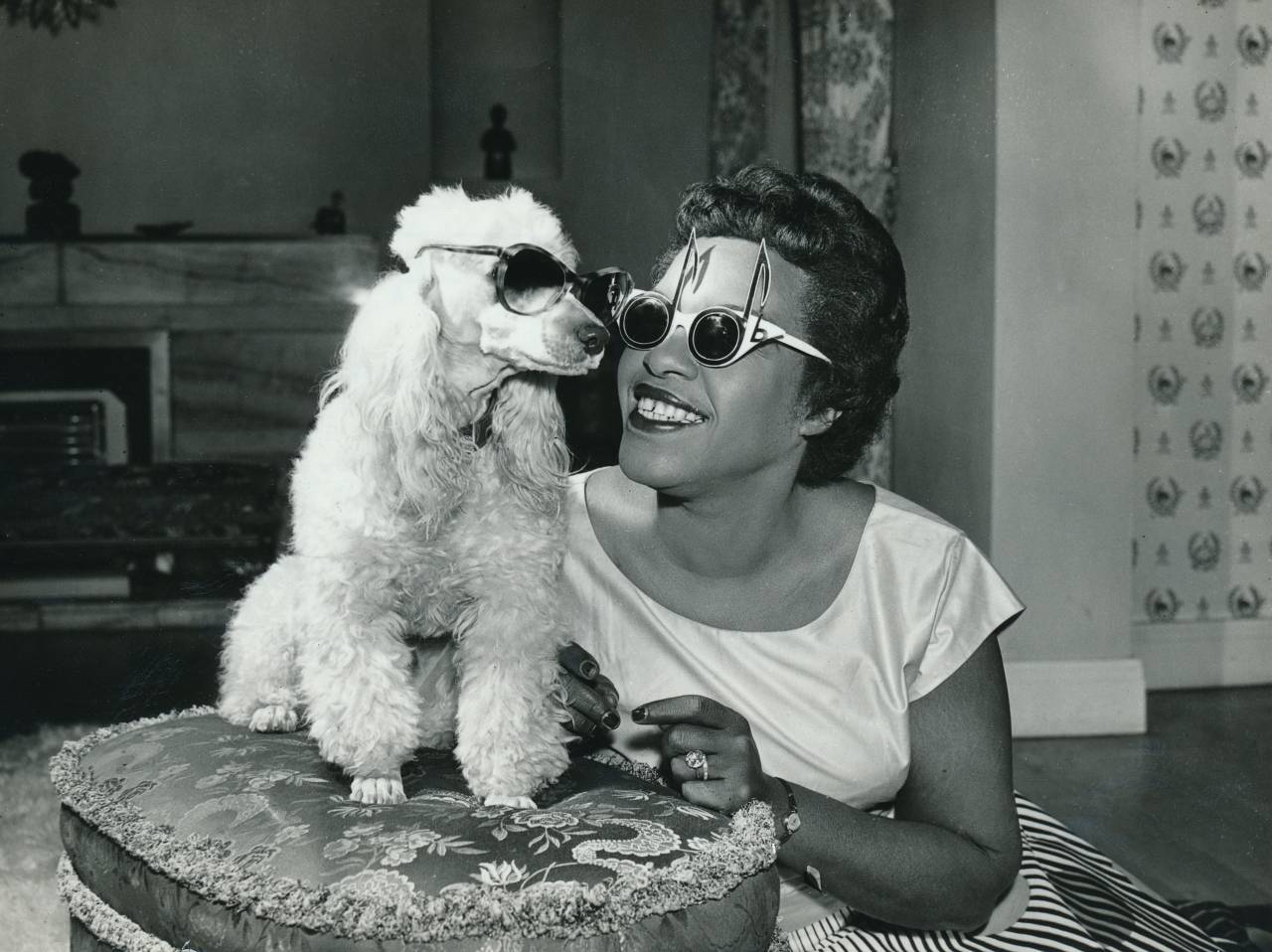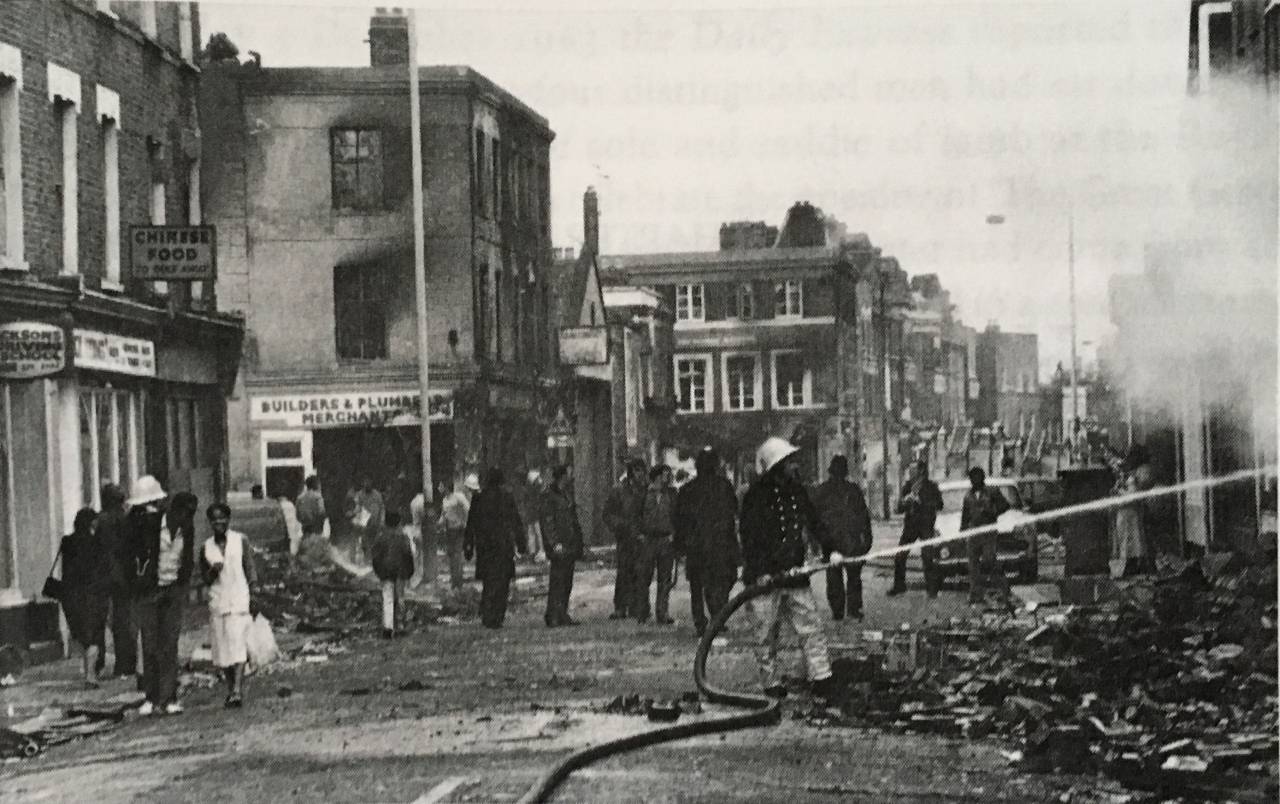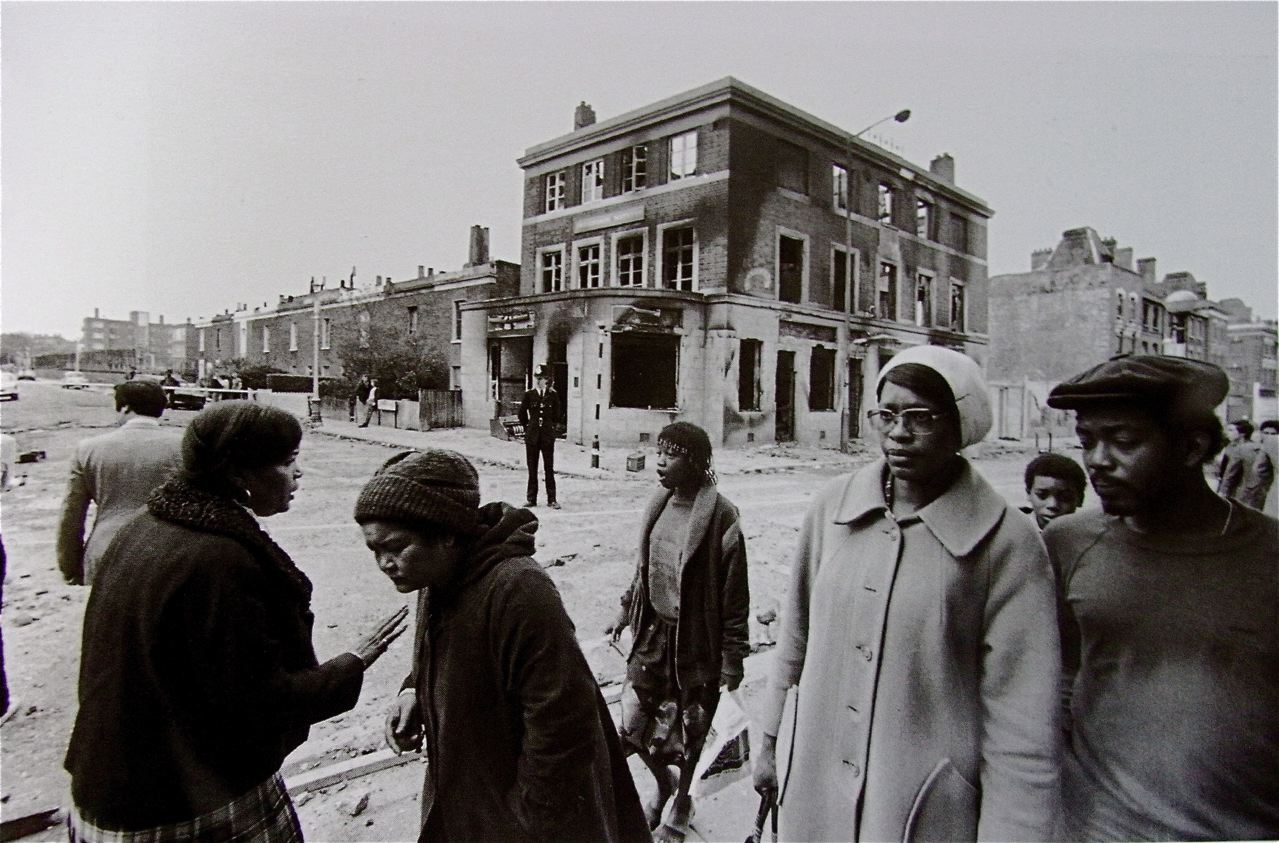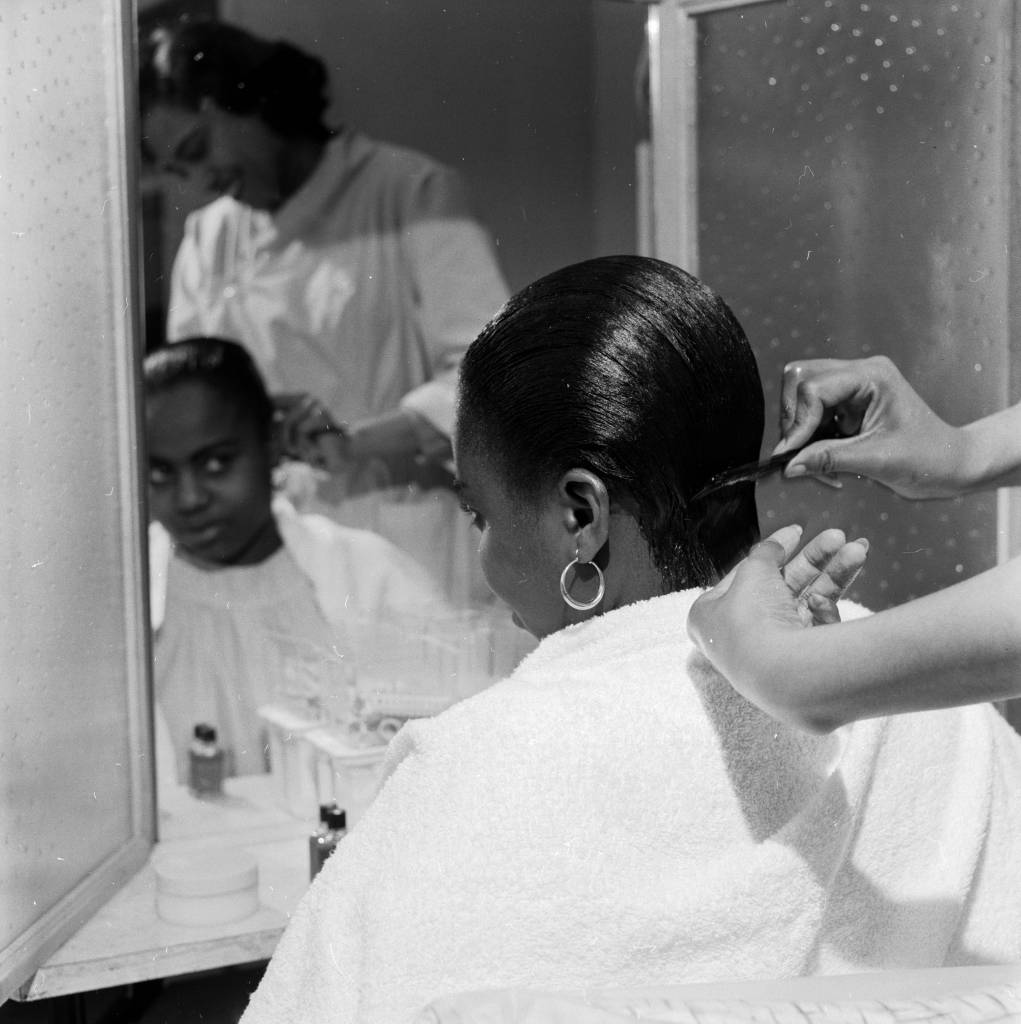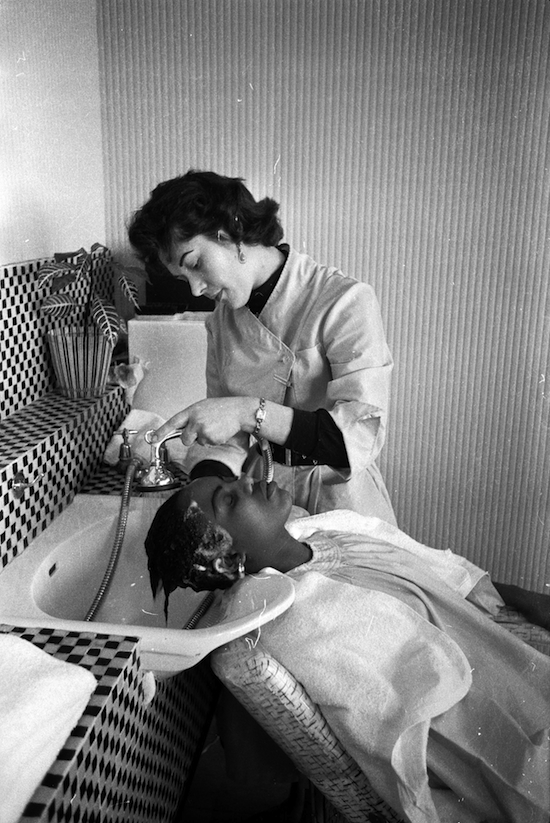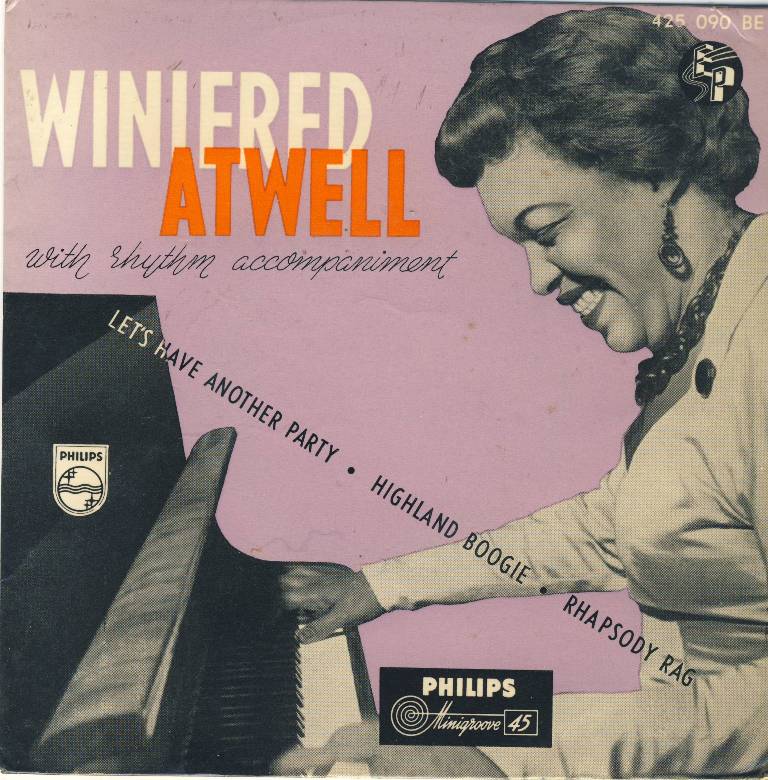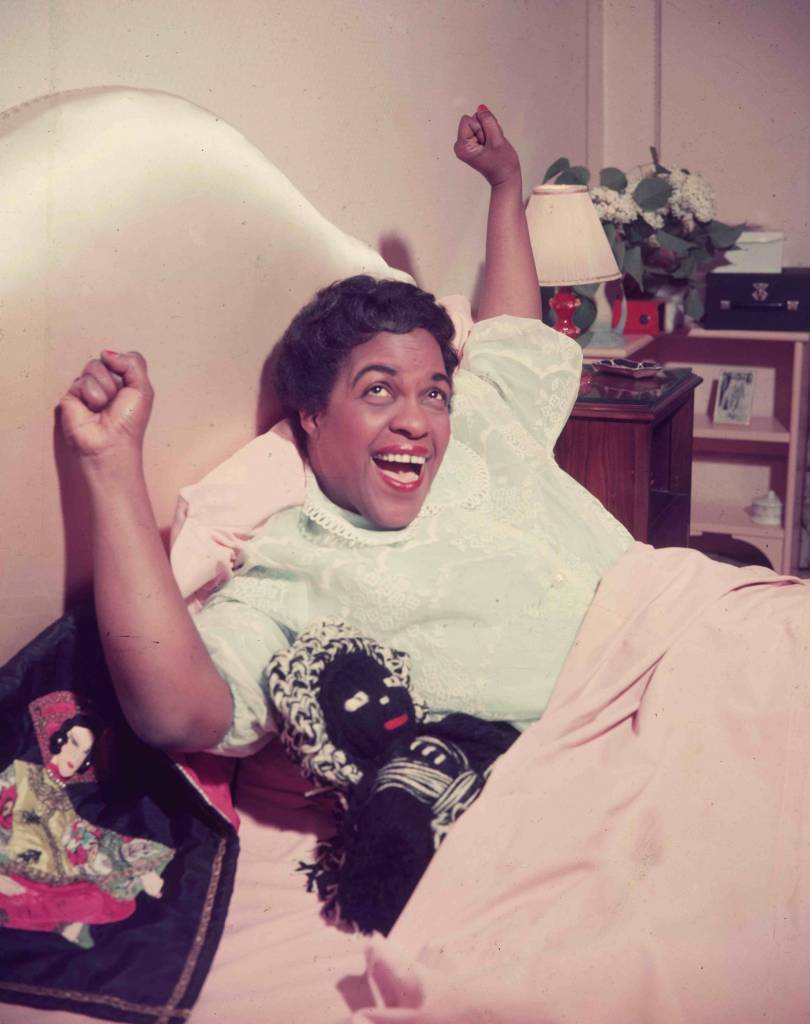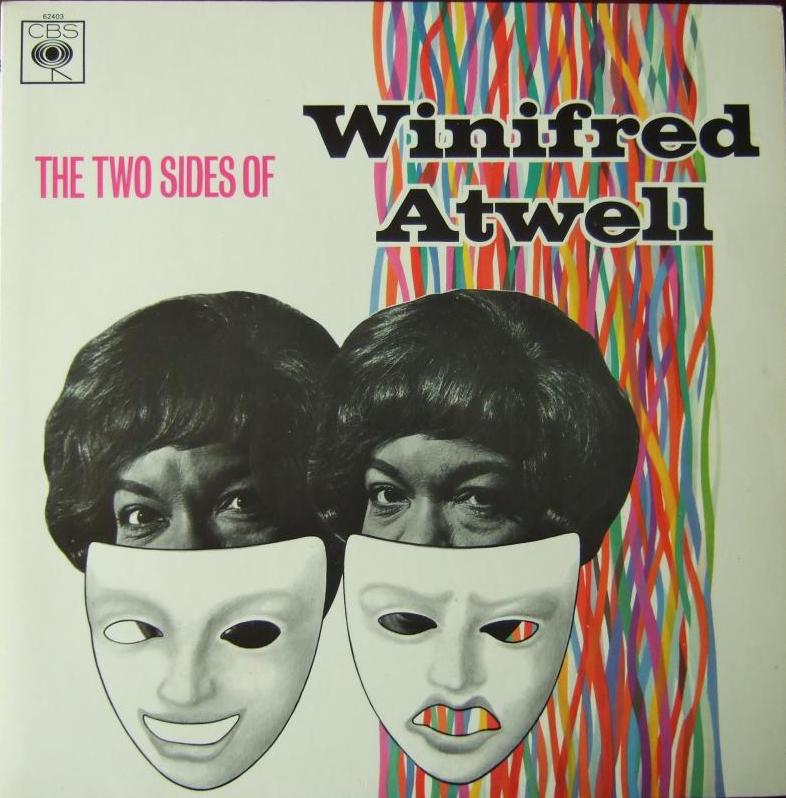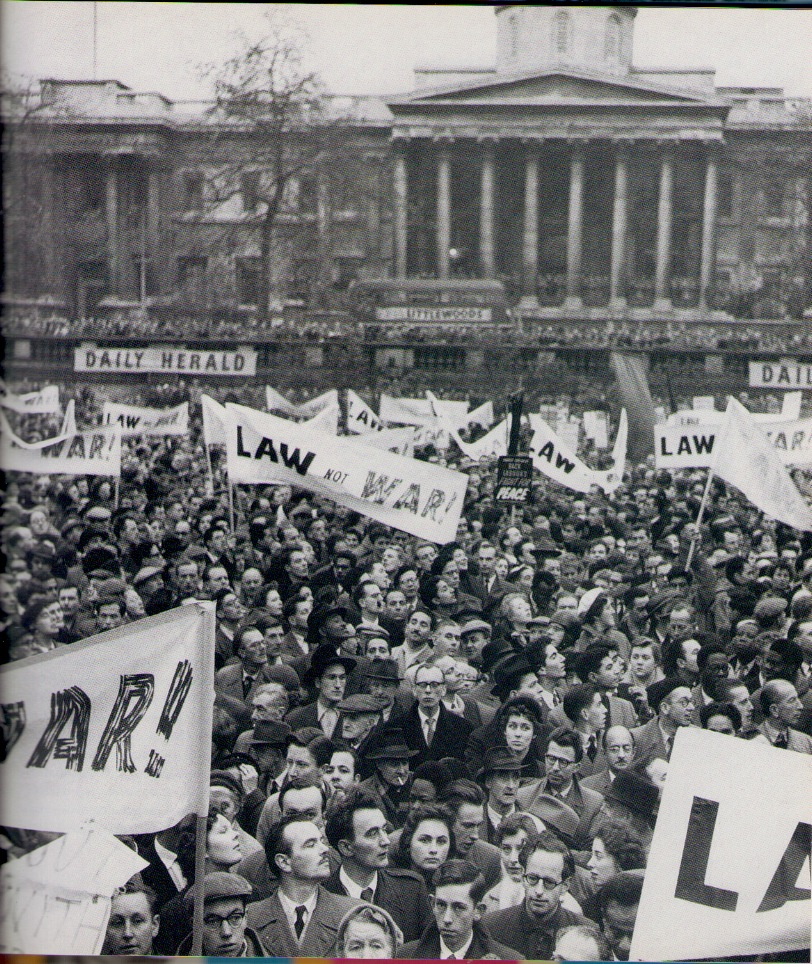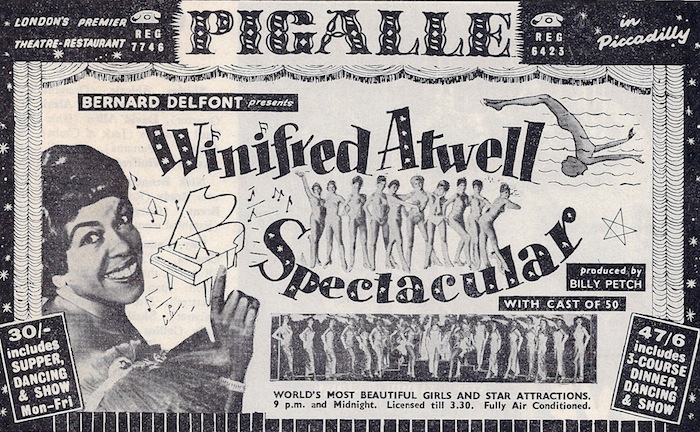At around eight o’clock on the Saturday evening of 14 April 1981, a Molotov cocktail was thrown through a window of The George Hotel on the corner of Effra Parade and Railton Road in Brixton. It was the second night of the Brixton riots and it had been no coincidence that the pub had been targeted – the landlord was infamous in the sixties and seventies for his treatment of local black people and he had been reported to the Race Relations Board for his behaviour.
In the 1970s the pub had been the subject of several local marches, and The South London Press, not usually known to be at the vanguard of progressive racial politics at that time, wrote that the arson was ‘undoubtedly an act of revenge for years of racial discrimination.’ It was relatively unnoticed that down from The George on the other side of Effra Parade most of the properties in a small block of shops on Railton Road were also destroyed during the rioting. This included a plumbers’ merchants at 82A Railton Road on the corner of Chaucer Road. The building all but burnt down during the night and would eventually be demolished.
Tension in Brixton had heightened earlier that April mainly as a reaction to ‘Operation Swamp 81’ – a particularly heavy-handed Metropolitan Police operation designed to reduce crime in the locality. Within six days, mainly through the heavy use of the ’Sus’ law (actually a very old law and officially known as the 1824 Vagrancy Act), over a thousand people had been stopped and searched and eighty-two arrested. The operation, presumably intentionally by the Met, was named after a word Margaret Thatcher uttered during a 1978 World in Action interview about immigration: ‘if there is any fear that it [Britain] might be swamped, people are going to react and be rather hostile to those coming in.’
To be fair, and this is not often remembered, she also said in the interview, albeit patronisingly maybe, that ‘in many ways [minorities] add to the richness and variety of this country’. It certainly isn’t remembered now, and it’s doubtful if it was noticed in 1981, but the building at 82A Railton Road that burnt down that night once housed possibly the first black women’s hairdressers in London. Situated opposite the drinking club ‘The Glass Bucket’ it had opened in 1956 and was called The Winifred Atwell Salon.

30th April 1957: Winifred Atwell has her hair straightened out at her own hairdressing salon in Brixton, London. (Photo by Lee Tracey/BIPs/Getty Images)
In the mid 1950s Winifred Atwell was undoubtedly one of Britain’s most popular entertainers. Trinidadian-born, her undisguised cheerful personality and well-played honky-tonk ragtime music brightened up many a ‘knees up’ in those pre-rock ’n’ roll days. In fact when Atwell reached number one in 1954 with Let’s Have Another Party, she became the first black musician in this country to sell a million records. Between 1952 when she reached number five with Britannia Rag’(written for her appearance at the Royal Variety Show that year), and 1959 when Piano Party reached number ten, she had eleven top-ten hits and is still the most successful female instrumentalist to have ever featured in the British pop charts. At the peak of her popularity her hands were seen as so valuable that they were insured for £40,000, and it was said – and how many of us would like to sign a legal document like this – that there was a clause in the insurance contract stipulating that she must never wash the dishes.
Atwell, was born in Tunapuna, near Port of Spain in Trinidad around 1914 (most sources say that year but according to her marriage certificate it was 1915 and on her grave it says 1910). She had been playing Chopin recitals since the age of six. After the war she went to study music in New York under the pianist Alexander Borovsky, but arrived in London in 1946 to study classical music piano at the Royal Academy of Music. In the evenings she supported herself by playing ragtime and boogie-woogie at clubs and hotels around London. She had learnt this genre of music playing for servicemen during the war in Trinidad. A year after Atwell arrived in England she married Reginald ‘Lew’ Levisohn, who gave up his stage career as a variety comedian and became her manager. She was almost groomed for stardom by him and he encouraged her to play her piano more and more in the rollicking honk-tonk upbeat style that was almost completely her own.
In 1948 Winifred was booked at a Sunday charity concert at the London Casino (originally, and now once again, called the Prince Edward Theatre) in Old Compton Street in place of the glamorous actress and singer Carole Lynne who had been feeling unwell. The impresario Bernard Delfont, who was married to Lynne, had heard from the agent Keith Devon about a ‘coloured girl, a pianist, who has the makings of a star.’ Winifred Atwell, to huge applause, ended up taking several curtain calls that night and was immediately signed up by Delfont to a long-term contract. In 1951 she signed a record contract with Decca, and the following year she was playing in front of the new Queen Elizabeth at the 1952 Royal Variety Performance. Winifred completed her act that evening with Britannia Rag – a piece of music she had written specially for the occasion. It received a rapturous reception, not least from the Queen, and it was to be her first big hit, reaching number five over Christmas and into the New Year.
https://www.youtube.com/watch?v=8eTJN12WqUI
During her live performances Atwell brought together the two worlds of her piano playing and would usually open her act with a piece of classical music played on a grand piano, but after a short while would then change over to what she and her audiences came to know as her ‘other piano’ – a beaten up and specially de-tuned upright that had been bought by her husband in a Battersea junk-shop for just 30 shillings. The small journey across the stage between the two pianos encapsulated perfectly how she managed to turn her career from a trained European-classical piano player to the more, despite being Trinidadian, ‘authentic’ black-American rhythmic music for which she was now famous. In 1953 a piano tuner at Blackpool’s Hippodrome Theatre came across Atwell’s old battered piano and ‘kindly’ tuned it to play perfectly. To much consternation, no one could be found to de-tune it and when Atwell performed that evening on a perfectly tuned upright piano, the story, literally, became front page news.
The writer and economist C.B. Purdom once wrote that London in the fifties was ‘dulled by such extensive drabness, monotony, ignorance and wretchedness that one is overcome by distress’. It isn’t particularly difficult to see why Winifred Attwell became so popular at that time. The very successful record producer, lyricist and A&R manager Norman Newell once wrote: ‘Winnie was around at the right time. Immediately after the war there was a feeling of depression and unhappiness, and she made you feel happy. She had this unique way of making every note she played sound a happy note. She was always smiling and joking. When you were with her you felt you were at a party, and that was the reason for the success of her records.’
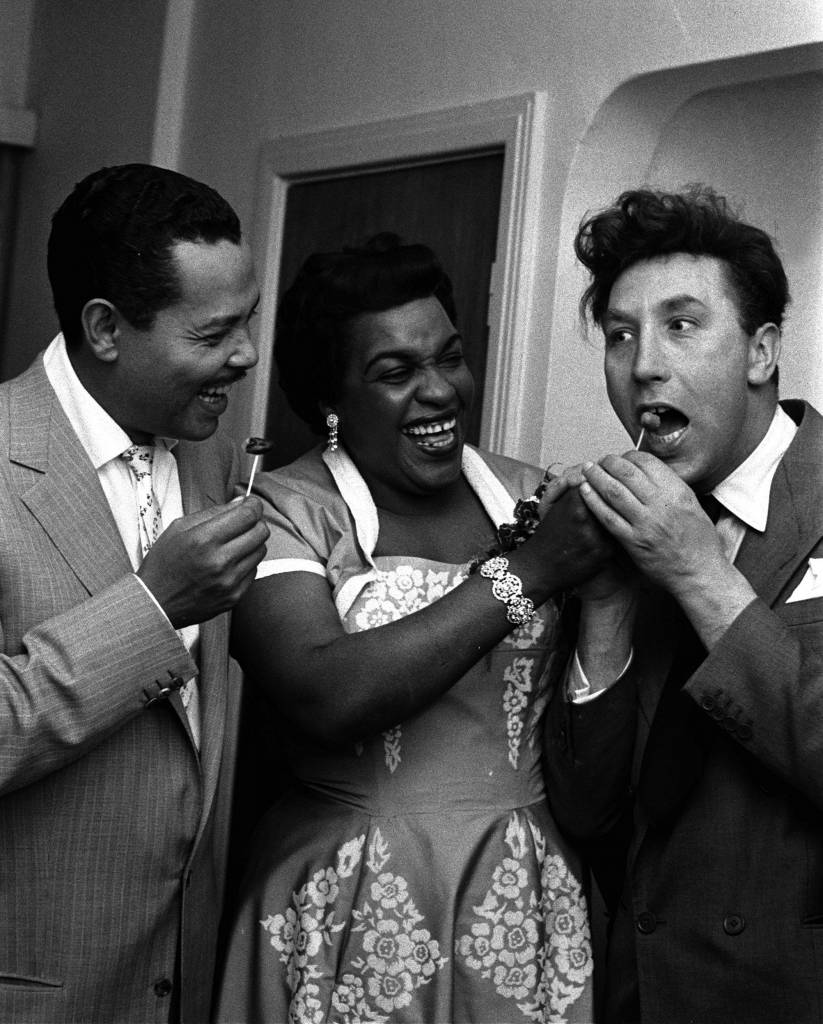
England, 1954, British musician Winifred Atwell is pictured with American singer and musician Billy Eckstein (left) and actor and comedian Frankie Howerd at a party (Photo by Popperfoto/Getty Images)
In March 1956, and now at the height of her fame, Atwell had her second number one with Poor People of Paris. A few months later she was due to make her second appearance at the Royal Variety Performance, which traditionally took place on the first Monday of November. Four hours before the curtain rose, and to the shock of the still-rehearsing all-star cast which included Laurence Olivier and Vivien Leigh, but also Sabrina backed by the Nitwits, the show was suddenly cancelled. The day before, on Sunday 4 November, the Observer had written about the Suez Crisis, declaring that the action against Egypt had ‘endangered the American Alliance and Nato, split the Commonwealth, flouted the United Nations, shocked the overwhelming majority of world opinion and dishonoured the name of Britain’.
Later that Sunday afternoon, at a huge rally at Trafalgar Square, attended by 10,000 people or more who were demonstrating under the banner ‘Law not War’, Aneurin Bevan told the crowd: ‘We are stronger than Egypt but there are other countries stronger than us. Are we prepared to accept for ourselves the logic we are applying to Egypt?’ To the crowd who were now loudly applauding he continued: ‘If Sir Antony is sincere in what he says – and he may be – then he is too stupid to be Prime Minister.’ After the speech many of the crowd started streaming down Whitehall towards the Prime Minister’s residence, all the while chanting: ‘Eden Must Go, Eden Must Go’. The crowd were met with a ring of police protecting Downing Street, and many demonstrators became bottled in and had nowhere to go. In the confusion, some mounted police charged down Whitehall and rode right into the demonstrators scattering them everywhere.
The next day the Royal Family were advised that it was for the best that the Variety Show was cancelled. Bernard Delfont wrote in his autobiography that after the cast were informed: ‘Winifred Atwell gave an impromptu party in an attempt to lift our spirits.’ [5] Whether the Queen’s spirits also needed lifting we don’t know, but Winifred performed later at a private performance for the Queen and Princess Margaret at Buckingham Palace where she played Roll Out the Barrel and other Royal favourites.
In 1956 Winifred opened her hairdressing salon on Railton Road in Brixton. She had initially lived nearby although by now she lived with Lew in the more salubrious Hampstead, but Atwell still kept property in Brixton and a very young Sharon Osbourne, then Sharon Arden, along with her father Don ‘Mr Big’ Arden – subsequent manager of The Small Faces, ELO, and Black Sabbath, amongst others – lived in a house rented from her at 68 Angell Road.
Osborne wrote about the property as being typical of the area: ‘Our house was large and old, with six steps leading up from the pavement and pillars on either side. At one time it must have been quite grand, but by the fifties the plaster was peeling off, and once you got inside everywhere was dingy, drafty and damp.’ Sharon’s mother was renting the house as theatrical digs and had met Don when he was a singer and had come to stay in 1950. Six weeks later they were married. Sharon talks of the Brixton she knew as a child in her autobiography:
In the fifties and early sixties, Brixton was where all the variety artists lived, comedians, singers, ventriloquists, acrobats, entertainers. Pre-TV, variety was the only entertainment there was for ordinary people, and with the Brixton Empress and the Camberwell Palace being less than a mile away, Brixton was the hub. Over the road from us were the fire-eater and a juggler. A dog act, a man called Reg, lived in a caravan in a bombsite behind our road and I used to play with his little girl.
Isabelle Lucas was a Canadian actress originally, who performed in many National Theatre productions, and is remembered as Norman Beaton’s wife in The Fosters and also for two separate roles in Eastenders. Isabelle once spoke about Atwell:
In those days there were no black salons for black women in this country. Black women styled their hair in their kitchens. I needed advice on how to straighten and style my hair, but I didn’t know any black women in Britain. I had only heard about Winifred Atwell. So one day I looked her up in the London telephone directory and found her listed! I rang her, and to my great surprise she answered! I explained my predicament, and she invited me to her home in Hampstead. It was as easy as that! I met her lovely parents, whom she brought to this country from Trinidad, and Winifred gave me some hair straightening irons.
Now at the height of her career, Winifred Atwell was one of Britain’s favourite performers. She had her own series on ATV in 1956, and in the following year another series, this time for the BBC. For a black woman of that era this was nothing short of extraordinary, although unfortunately nothing remains of this mid-fifties TV history and, if any of the shows were recorded, they have long been wiped. By the late fifties, however, tastes in music were rapidly changing, and Winifred Atwell had her last top ten hit in 1959. Her manic style either sounded old-fashioned – the era of Rock ‘n’ Roll was now a few years old and not going away – or for people who still liked her style of music, Russ Conway had taken up her baton and would have six top ten hits in 1959 and 1960. Winifred Atwell first toured Australia in 1958 and was particularly popular there. When record sales started to fall in Britain, she spent more and more time in the southern hemisphere. She only started returning to Britain for club bookings and the odd television appearance. By 1961 her hairdressing salon in Railton Road had been sold and the premises became A.C. Skinner and Co. builders merchants.
In 1961, Sir Robert Menzies, Australia’s longest serving Prime Minister, helpfully defined the difference between apartheid and his ‘White Australia’ policy. A policy which, at his own admission, kept most ‘coloured immigrants out of the country’. Apartheid he said, ‘is a discriminatory policy in respect of people already resident’ whereas, the ‘White Australia’ policy was ‘discrimination in the admission of persons for permanent residence.’ [9] It was in the same year during a long eighteen month tour of Australasia, and despite the attitudes of the Australian government at the time which were nothing short of overt racial discrimination, Atwell realised that she wanted to live permanently in Australia. It was during that long tour, however, that she started to notice how badly aborigines were being treated.
At a concert in Moree in New South Wales she saw that they had been forced to sit apart from white listeners on hard wooden benches. The Manchester Guardian also reported at the time that in Rowen in North Queensland, ‘aboriginals had been refused admittance to the theatre when she appeared. At her request the management had finally left the doors of the theatre open so that the aboriginals could watch and listen from outside.’ [10] Ten years later in 1971, Atwell was at last granted permission to stay in the country that she had begun to love. The Sunday Mirror reported the news: ‘Pianist Winifred Atwell has been given permission to settle down in Australia as an immigrant. She has been told this officially in spite of the country’s “White Australia” policy. An Australian immigration official said yesterday that she had been granted residence because she was “of good character and had special qualifications.” The Immigration Minister Mr Phillip Lynch said: “We will not stand in the way of an international artist of such repute.”‘
Seven years later, in 1978, Attwell’s husband Lew died and she never really recovered from the loss. Except for playing the organ every Sunday at her local church she became a virtual recluse in her seafront flat a few miles north of Sydney. In 1981, at around the same time as the flaming bottle of petrol was thrown through the window of what used to be her hair salon on the Railton Road, she was finally granted full Australian citizenship. She died just two years later from a heart attack in Sydney on 27 February 1983.
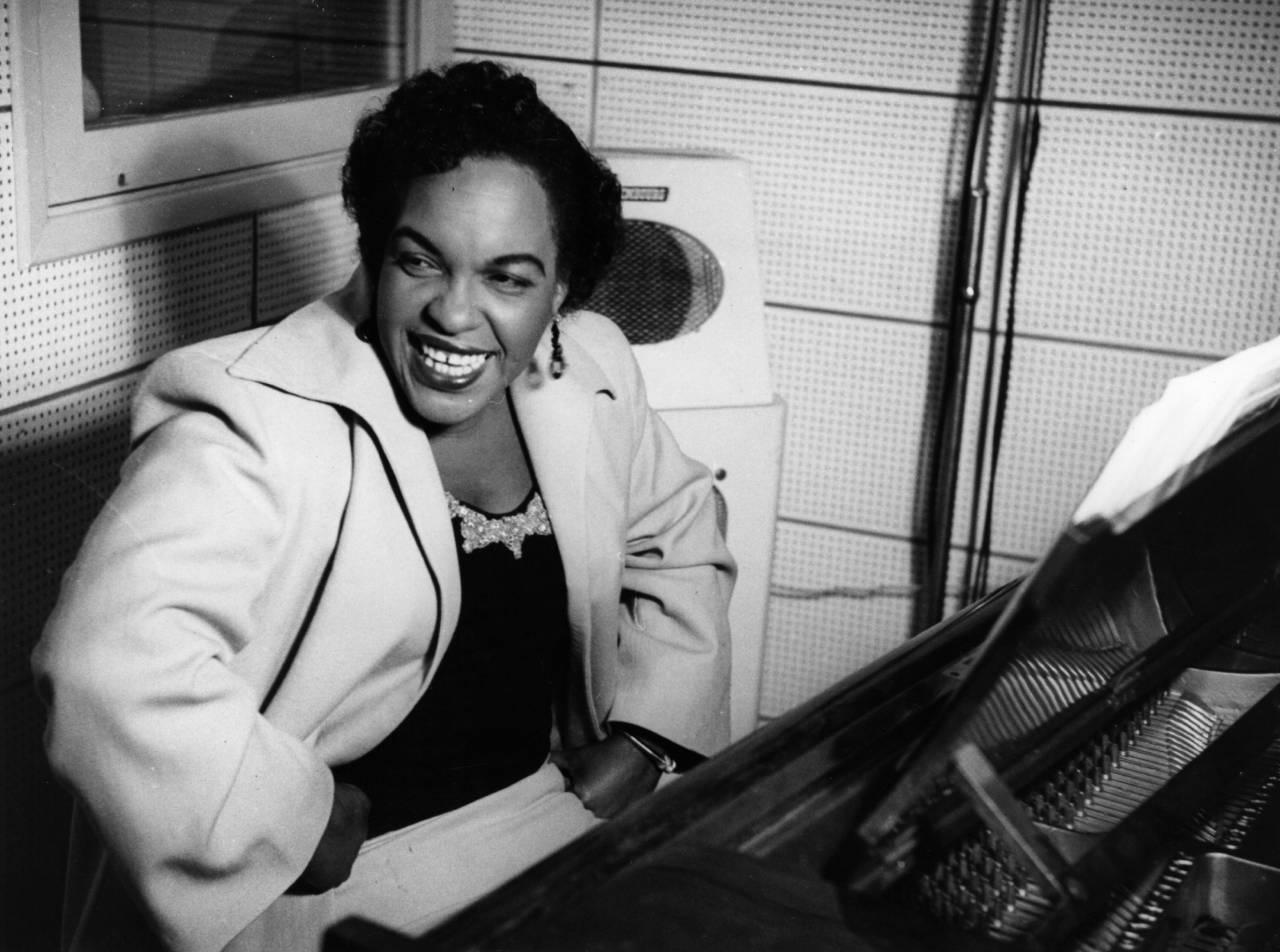
Pianist Winifred Atwell who used to work in her father’s chemist shop in Tuna Puna, Trinidad, has just sold her 5 millionth record. A concert pianist, she achieved fame as a boogie player with a classical touch. Original Publication: Picture Post – 7273 – Boogie From Tuna Puna – pub. 1954. Photo by Bert Hardy.
Would you like to support Flashbak?
Please consider making a donation to our site. We don't want to rely on ads to bring you the best of visual culture. You can also support us by signing up to our Mailing List. And you can also follow us on Facebook, Instagram and Twitter. For great art and culture delivered to your door, visit our shop.
